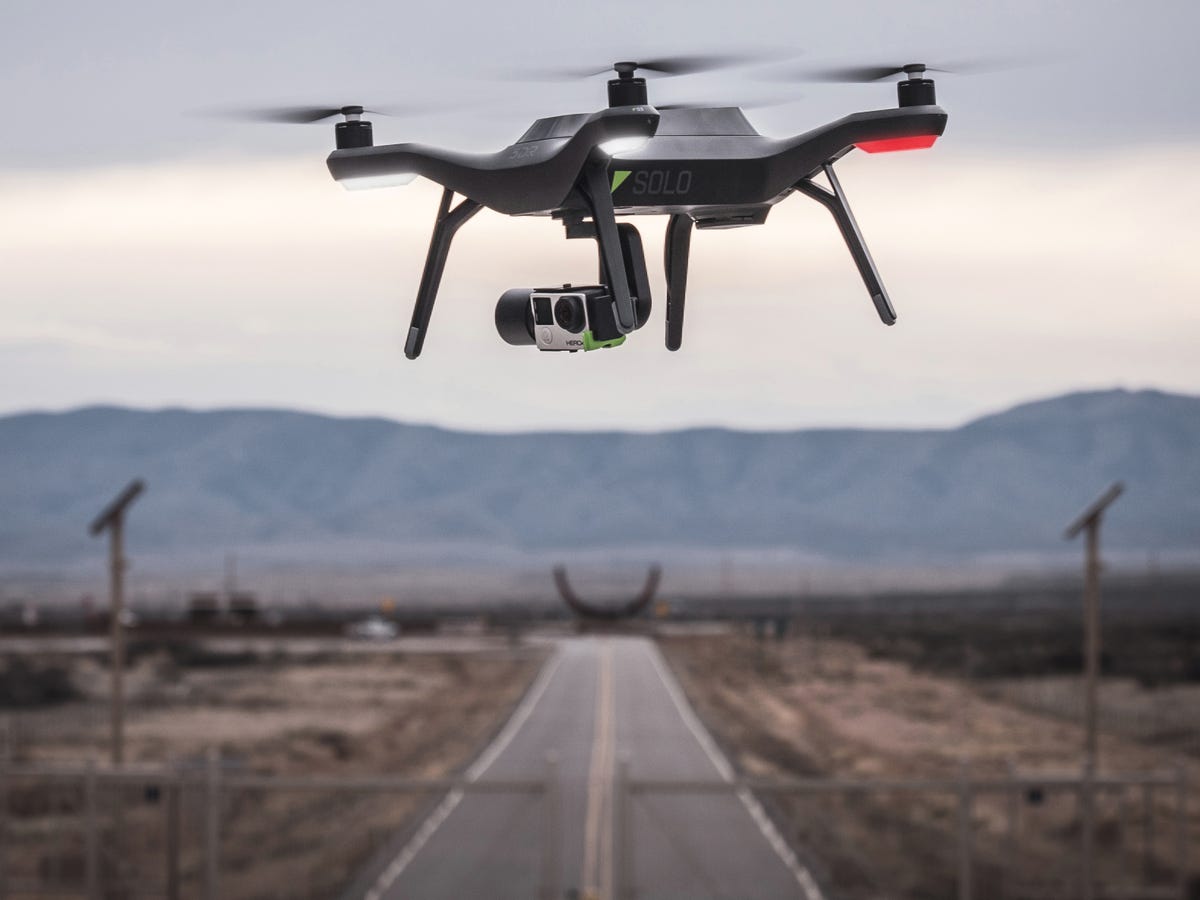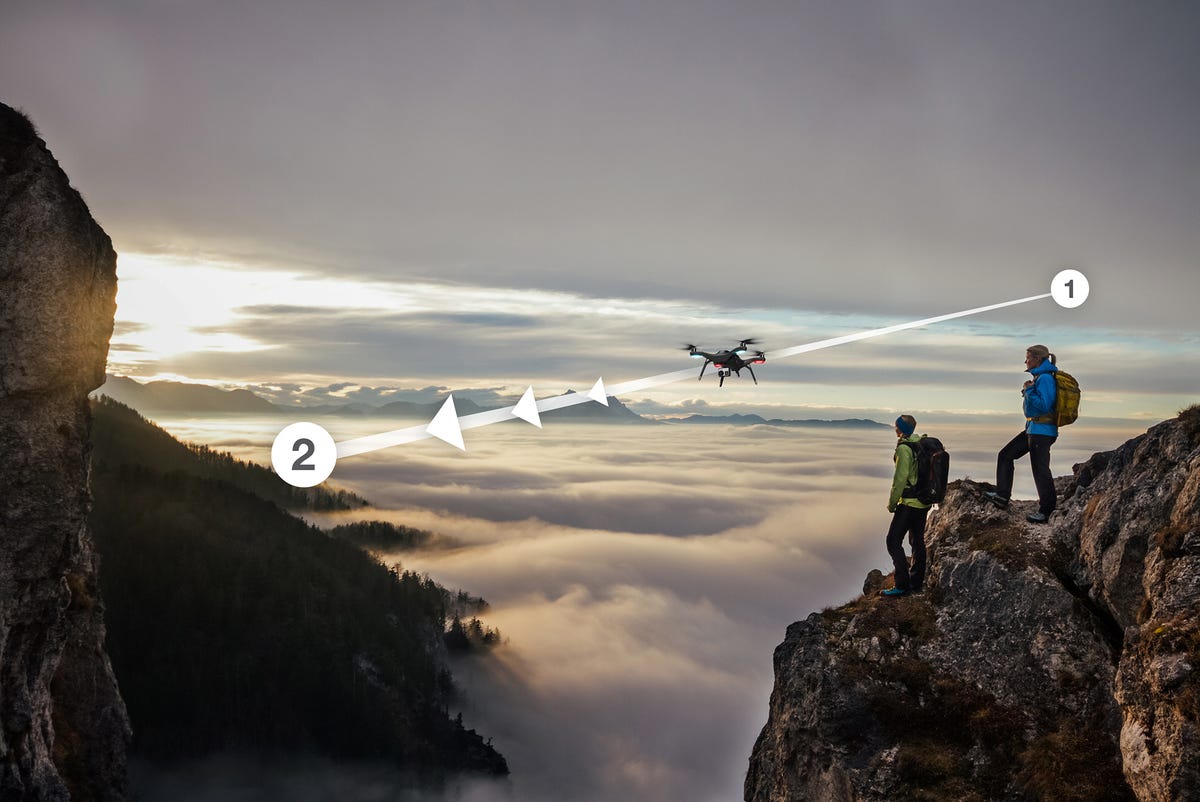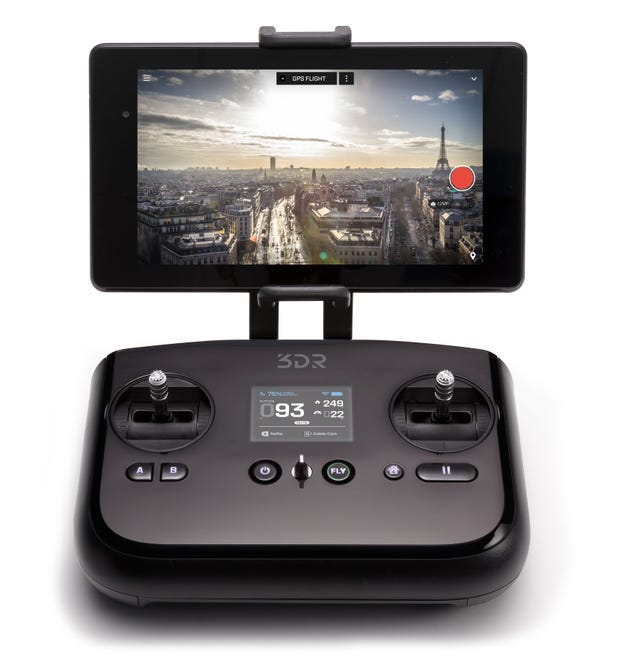There are drones you can attach a GoPro to. And then there’s the 3D Robotics Solo.
The Solo, its controller and optional Solo Gimbal — a motorized three-axis camera stabilizer — are the culmination of a couple of years of work and a partnership with GoPro. A partnership that has resulted in a drone with full in-flight camera control and live, low-latency HD streaming straight to mobile devices.
To do this, 3DR had to give the Solo a brain of its own.
“What Solo introduces are two new technologies for deep integration with GoPros,” said Chris Anderson, 3D Robotics’ CEO and co-founder. “The first thing, is because it has an onboard Linux computer, it’s capable of running apps for computer vision for object tracking and artificial intelligence and other things. And because it also has a long-distance broadband connection, it’s able to transmit not just the HD video, but flight data and telemetry.”
The latter helps overcome Wi-Fi’s shortcomings. “People love their GoPros, and they’re great cameras,” said Anderson, “but there aren’t a lot of good ways to control it from the air short of its Wi-Fi, which is limited in range.”
Best drone photos of 2014 (pictures)






To solve that, the Solo Gimbal taps into the Hero port on the back of the camera, usually used for adding a touchscreen or battery, in addition to the GoPro’s Micro-HDMI port. “We’re able to let you have the GoPro that you want, but also have the control over that camera.”
Combined with its wireless capabilities, you’ll have control of the camera from up to a half a mile away (800 meters). You’ll be able to turn the camera on or off and change shooting modes and settings — all without landing or even bringing it back within the Wi-Fi range of your Hero3/3+ or Hero4. And you’ll have live HD video. It’s something no other consumer drone currently offers.


3DR
You also won’t find the Solo’s two Linux computers in other models: one in the quadcopter and another in the controller. Anderson said the combined power makes it possible to take the scripted camera movements that are the stock in trade of Hollywood and turn them into software.
“Basically, we have shots that are almost impossible for a human to fly, or to fly well with any consistency, so we let the software do the work. They are shots you can initiate at the press of a button. For the first time, you don’t have to be behind the camera, you can be in front.”
Anderson said while some of its competitors use a two-operator model where one person pilots and the other controls the camera, the Solo has the potential for a zero-operator model, where you go about your life and it will get the shot.


Leander Nardin/3DR
“It will keep the camera focused on you, it has an understanding of what good aesthetics are, what a good shot means from an artistic perspective.” For example, you can set up virtual rails or cables for the drone to travel on, giving it a known good path, and it will use both GPS and object detection and tracking to follow the subject. Unfortunately, it can’t do sense-and-avoid, though.
The Solo will start off with a handful of these scripted shots, but you’ll be able to download more camera paths as they become available as part of the platform. And you’ll be able to create your own, too, and everything is done in-app — it’s a completely mobile experience.
This includes any updates for the drone and controller and the Solo Gimbal, which is just as smart as the rest of the package. It has its own autopilot built in that talks directly to the drone’s autopilot, so the Solo has full control over camera movement.


3DR
The controller is optimized for aerial photography. On the top left you’ll find a fine-grain tilt control, while on the right are two buttons for tilt-position presets in addition to a knob for adjusting tilt speed. Clicking the control starts and stops recordings, while pressing the presets simultaneously snaps a photo.
A built-in clean HDMI output lets you connect directly to an external display for live broadcasting.
Piloting is simplified too, with dedicated buttons for takeoff, land, return home and pause (an electronic emergency brake). There are two user-definable buttons also.
The controller has a color display for flight information, removing flight-status guesswork, and the controller even has haptic feedback for critical warnings like a low battery. (3DR is claiming up to 20 minutes of flight time with a GoPro and Solo Gimbal attached.)
The controller works hand-in-hand with the Solo app for iOS and Android. This is what you’ll use to gain access to your GoPro camera’s settings and other controls and it will also let you choose either a live view from the camera or a satellite view. The app can also log your flights and send reports to 3DR’s support team in case you’re having problems. If there is a problem, the app will automatically offer the option to immediately submit a service ticket. Also if the flight logs show the drone was lost or damaged due to a system error, 3DR will immediately repair or replace everything, including your camera.


3DR
Worth noting, too, is that 3DR’s DroneKit platform is completely open. “People have the ability to add apps to this at every layer: the drone, the phone and the cloud,” Anderson said. “We’re the only open platform out there. Our competitors have fantastic products, but they’re not platforms.
“This is like the PC or the early days of the App Store,” he added. “Who knows what these things will some day become. What we want to do is create a system by which other people can reimagine the future of the drone and then act on them simply.”
The 3D Robotics Solo drone and controller will be available in May (globally in June and July) starting at $999/AU$1,499 (which converts to about £685). The Solo Gimbal will be available for an additional $400/AU$399 (£275).




